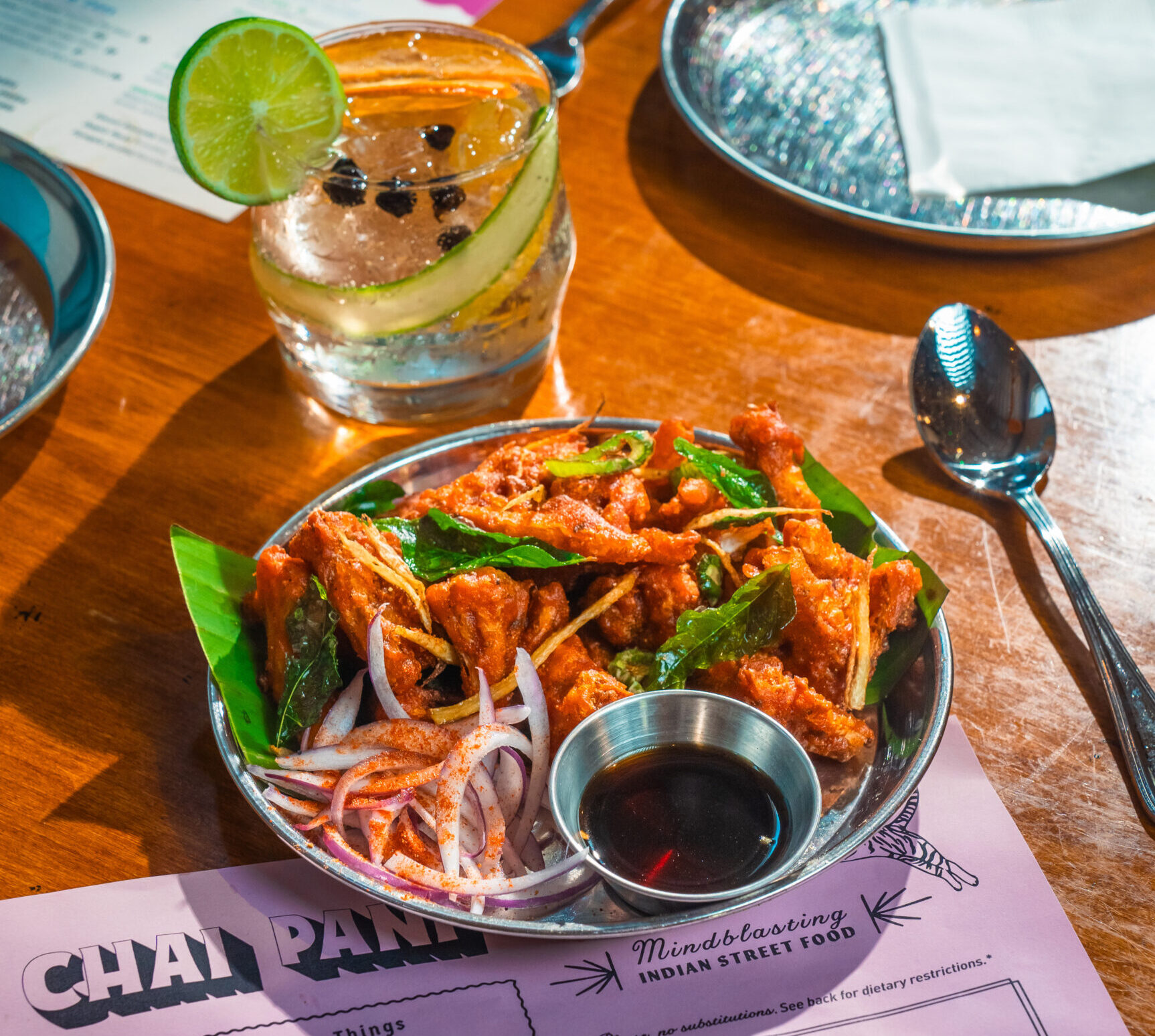A recent inductee to the Kikkoman Kitchen Cabinet, our inner circle of leading-edge chef partners, Chef Meherwan Irani is a man on a mission: to revolutionize Indian cuisine in America.
Chef Meherwan Irani grew up in Ahmednagar, in the midwestern state of Maharashtra in India. In 2009, he quit his day job and opened Chai Pani in downtown Asheville, North Carolina, with his wife and business partner, Molly. They didn’t have much foodservice experience, but they had a vision. They would serve Indian street food and home-cooked meals—the most underrepresented Indian foods in Western culture—in an atmosphere of casual fun and generous hospitality.
Chai Pani was an instant hit, and today, the self-taught chef leads a team of more than 300 as founder, chef and CEO of Chai Pani Restaurant Group, which includes Chai Pani Asheville, Chai Pani Decatur, Botiwalla (Atlanta, Charlotte, and Asheville), and Spicewalla.
Known for his bold use of spices and creative interpretations of traditional Indian dishes, Chef Irani has earned widespread recognition, including multiple James Beard nominations. And in 2022, Chai Pani Asheville was named Outstanding Restaurant by the James Beard Foundation.
We asked Chef Meherwan to share his perspective on Indian cuisine—and some surprising ways Kikkoman® Soy Sauce and other Kikkoman products add flavor and umami to his menu.
Q: What is it about your food and your approach that has made your restaurants so popular, even in the American South, where people are less familiar with Indian food?
A: Americans are discovering that Indian food is far more diverse and complex than just “spicy curries” thanks to the efforts of a number of innovative and talented Indian chefs around the country who are showcasing a different side of Indian cuisine. Our focus on Indian street food, or chaat; our rich storytelling in our food and atmosphere; our service mindset; and our approachability are what set us apart.
Q: What’s an example of “approachability”?

A: Our “Sloppy Jai” is the essence of the approachability of Chai Pani. I wanted to serve Kheema Pav [a Mumbai-style street-food snack featuring spiced ground meat on a bun in a way that would be familiar and bridge the cultural divide between a Parsi dish and Americans that have never tried it. So, by simply assembling it like an American Sloppy Joe sandwich and giving it a clever name, we turned it into one of our most popular dishes.
Q: Is soy sauce a traditional ingredient in Indian cuisine? How do you use it in your cooking?

A: Soy Sauce came to India by way of China. India shares a very long border with China and culinary traditions have been traded back and forth for centuries. There is an entire genre of Indo-Chinese cuisine called Desi Chinese. It’s extremely popular throughout India, much as Tex-Mex has evolved as its own cuisine. Street vendors have been using soy sauce, chili garlic sauce, and sweet and sour condiments liberally for a long time in their street food concoctions to add punch and umami. Our restaurants feature a handful of these Indo-Chinese dishes such as Gobi 65 and Chili Chicken, and we use Kikkoman® Soy Sauce in those to add rich savory flavor and umami. And I’ve developed a couple of non-traditional recipes that also get a flavor boost from Kikkoman® Soy Sauce, like our Boti Lamb Kebabs and our Tamarind Spare Ribs.
Q: What other Kikkoman products do you use in your restaurants?

A: We use Kikkoman® Rice Vinegar in our cult-followed Cumin Lime Dressing. We also use Kikkoman® Soy Sauce and Less Sodium Soy Sauce in our Boti Lamb Kebab and Regular Soy in our Tamarind Spare Ribs, as well as the dip for the Gobi 65.
Q: What’s your favorite Kikkoman foodservice product and how do you use it?

A: Kikkoman’s traditionally brewed Soy Sauce is the original and the best. It’s the key ingredient for our Boti Lamb Kebabs and Tamarind Spare Ribs.
Q: What are some “magical” Indian ingredients you think more American chefs should discover?
A: While many Americans are probably familiar with curry powder, the OG ingredient it’s based on is the curry leaf. When fried or tempered in hot oil, it releases an incredible aroma that can elevate even simple pan-fried potatoes. Hand in hand with the curry leaf is brown mustard seeds, which, when popped in hot oil, also infuse whatever you’re cooking with a delicious pungency and aroma. Anything cooked with curry leaves and mustard, if finished with lime and cilantro, completes the four layers of the flavor chain. More so than any curry powder or garam masala! These four ingredients together bring the flavors of India to any dish in a way that’s light, bright, and approachable.
Q: What advice would you give to American chefs who want to explore Indian flavors and learn more about Indian cooking?
A: Seek out regional Indian restaurants such as Gujarati, South Indian, Goan, etc. The “traditional” Indian restaurant is likely a Punjabi or North Indian restaurant and actually represents only a small portion of Indian cuisine. The reason my restaurants focus on street food is so that we can offer a variety of flavors, techniques, and experiences from across India. And, of course, if you can, travel, eat on the street and in people’s homes. Keep exploring, and welcome to the movement!